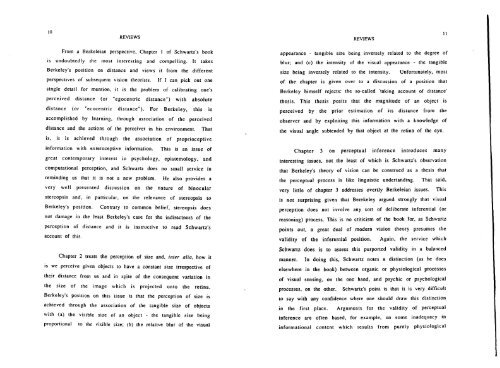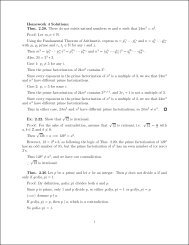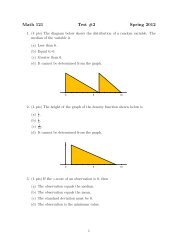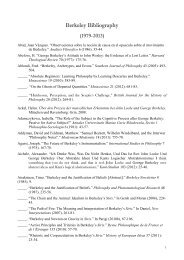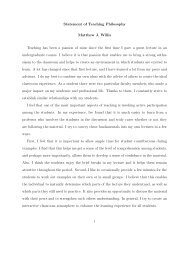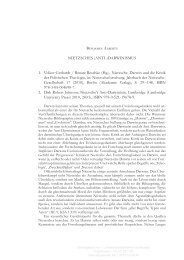Berkeley Is Pronounced Barclay - Home Pages
Berkeley Is Pronounced Barclay - Home Pages
Berkeley Is Pronounced Barclay - Home Pages
- No tags were found...
Create successful ePaper yourself
Turn your PDF publications into a flip-book with our unique Google optimized e-Paper software.
inREVIEWSREVIEWS11From a Berkeleian perspective, Chapter 1 of Schwartz's bookis undoubtedly the most interesting and compelling. It takes<strong>Berkeley</strong>'s position on distance and views it from the differentperspectives of subsequent vision theorists. If I can pick out onesingle detail for mention, it is the problem of calibrating one'sperceived distance (or "egocentric distance") with absolutedistance (or "ecocentric distance"). For <strong>Berkeley</strong>, this isaccomplished by learning, through association of the perceiveddistance and the actions of the perceiver in his environment. Thatis, it is achieved through the association of proprioceptiveinformation with exteroceptive information. This is an issue ofgreat contemporary interest in psychology, epistemology, andcomputational perception, and Schwartz does no small service inreminding us that it is not a new problem. He also provides avery well presented discussion on the nature of binocularstereopsis and, in particular, on the relevance of stereopsis to<strong>Berkeley</strong>'s position. Contrary to common belief, stereopsis doesnot damage in the least <strong>Berkeley</strong>'s case for the indirectness of theperception of distance and it is instructive to read Schwartz'saccount of this.Chapter 2 treats the perception of size and, inter alia, how itis we perceive given objects to have a constant size irrespective oftheir distance from us and in spite of the consequent variation inthe size of the image which is projected onto the retina.<strong>Berkeley</strong>'s position on this issue is that the perception of size isachieved through the association of the tangible size of objectswith (a) the visible size of an object - the tangible size beingproportional to the visible size: (b) the relative blur of the visualappearance - tangible size being inversely related to the degree ofblur; and (c) the intensity of the visual appearance - the tangiblesize being inversely related to the intensity. Unfortunately, mostof the chapter is given over to a discussion of a position that<strong>Berkeley</strong> himself rejects: the so-called 'taking account of distance'thesis. This thesis posits that the magnitude of an object isperceived by the prior estimation of its distance from theobserver and by exploiting this information with a knowledge ofthe visual angle subtended by that object at the retina of the eye.Chapter 3 on perceptual inference introduces manyinteresting issues, not the least of which is Schwartz's observationthat <strong>Berkeley</strong>'s theory of vision can be construed as a thesis thatthe perceptual process is like linguistic undertanding. That said,very little of chapter 3 addresses overtly Berkeleian issues. Thisis not surprising given that Berekeley argued strongly that visualperception does not involve any sort of deliberate inferential (orreasoning) process. This is no criticism of the book for, as Schwartzpoints out, a great deal of modern vision theory presumes thevalidity of the inferential position. Again, the service whichSchwartz does is to assess this purported validity in a balancedmanner. In doing this, Schwartz notes a distinction (as he doeselsewhere in the book) between organic or physiological processesof visual sensing, on the one hand, and psychic or psychologicalprocesses, on the other. Schwartz's point is that it is very difficultto say with any confidence where one should draw this distinctionin the first place. Arguments for the validity of perceptualinference are often based, for example, on some inadequacy ininformational content which results from purely physiological


